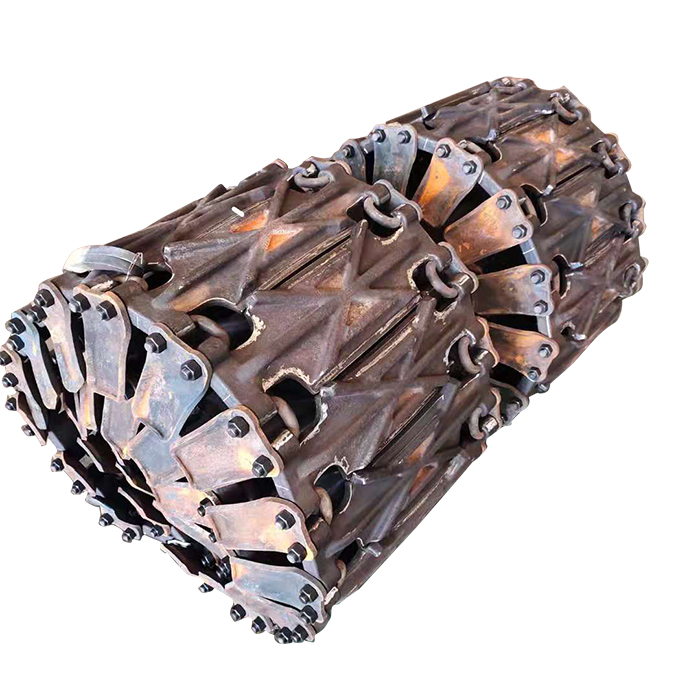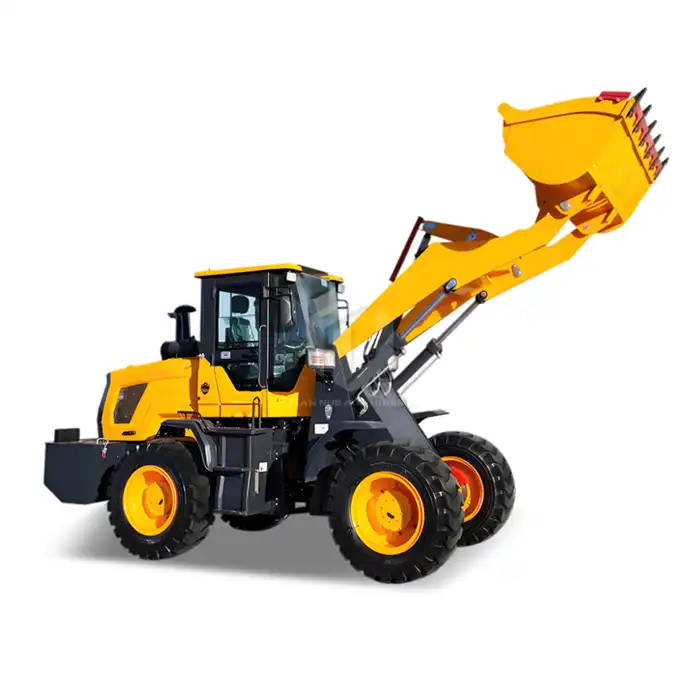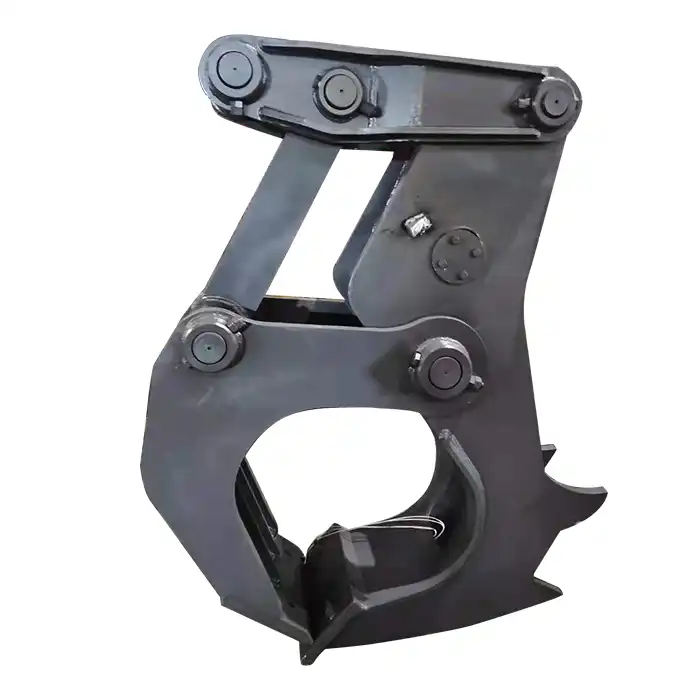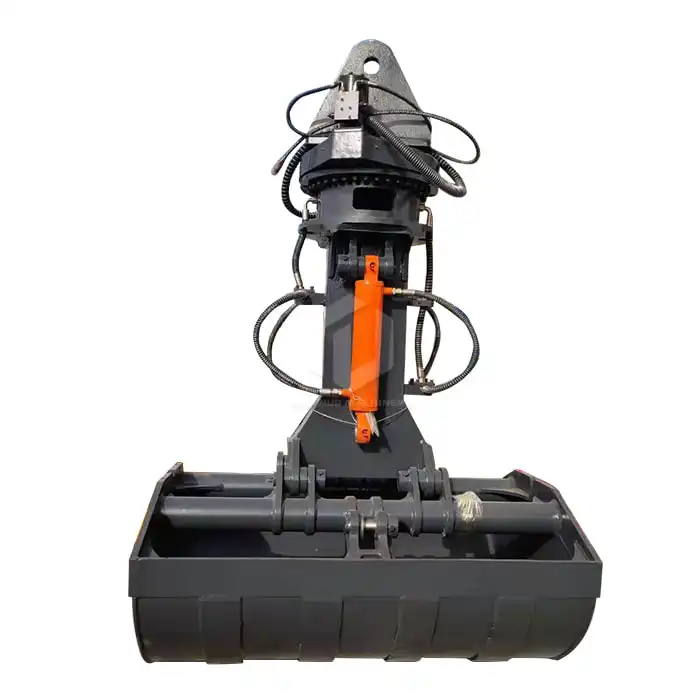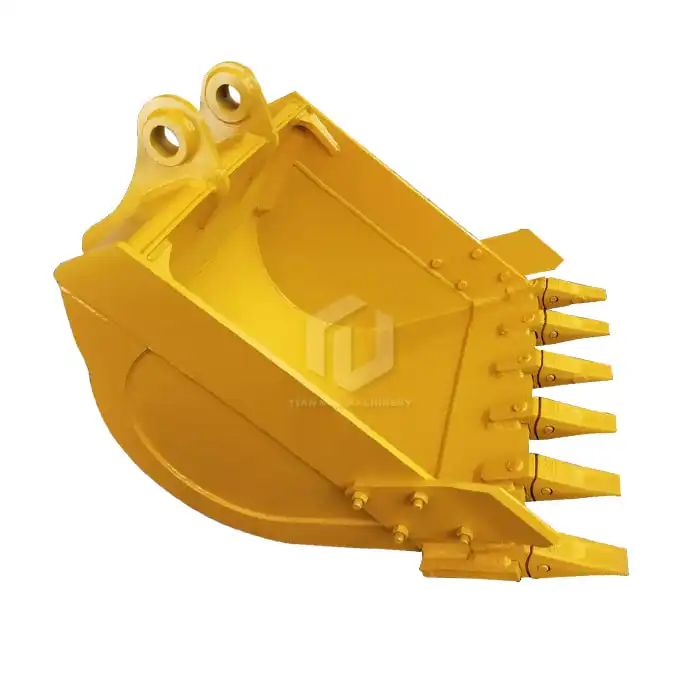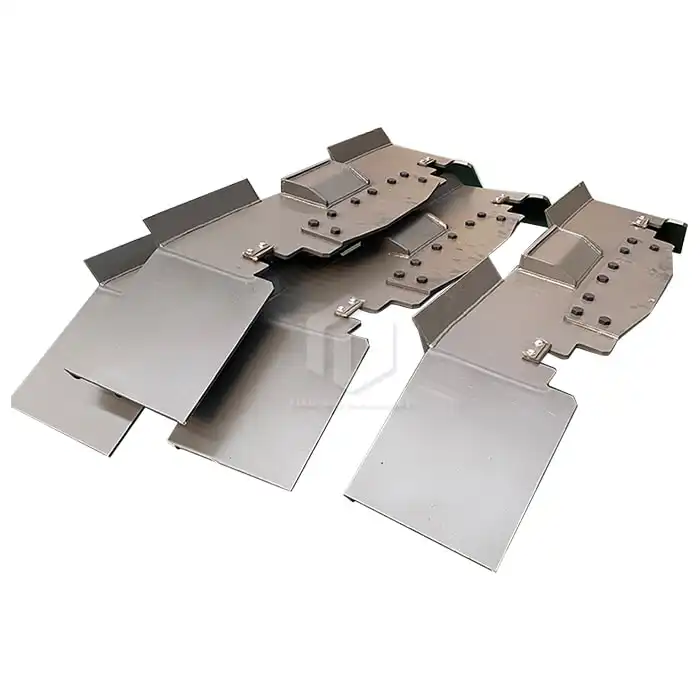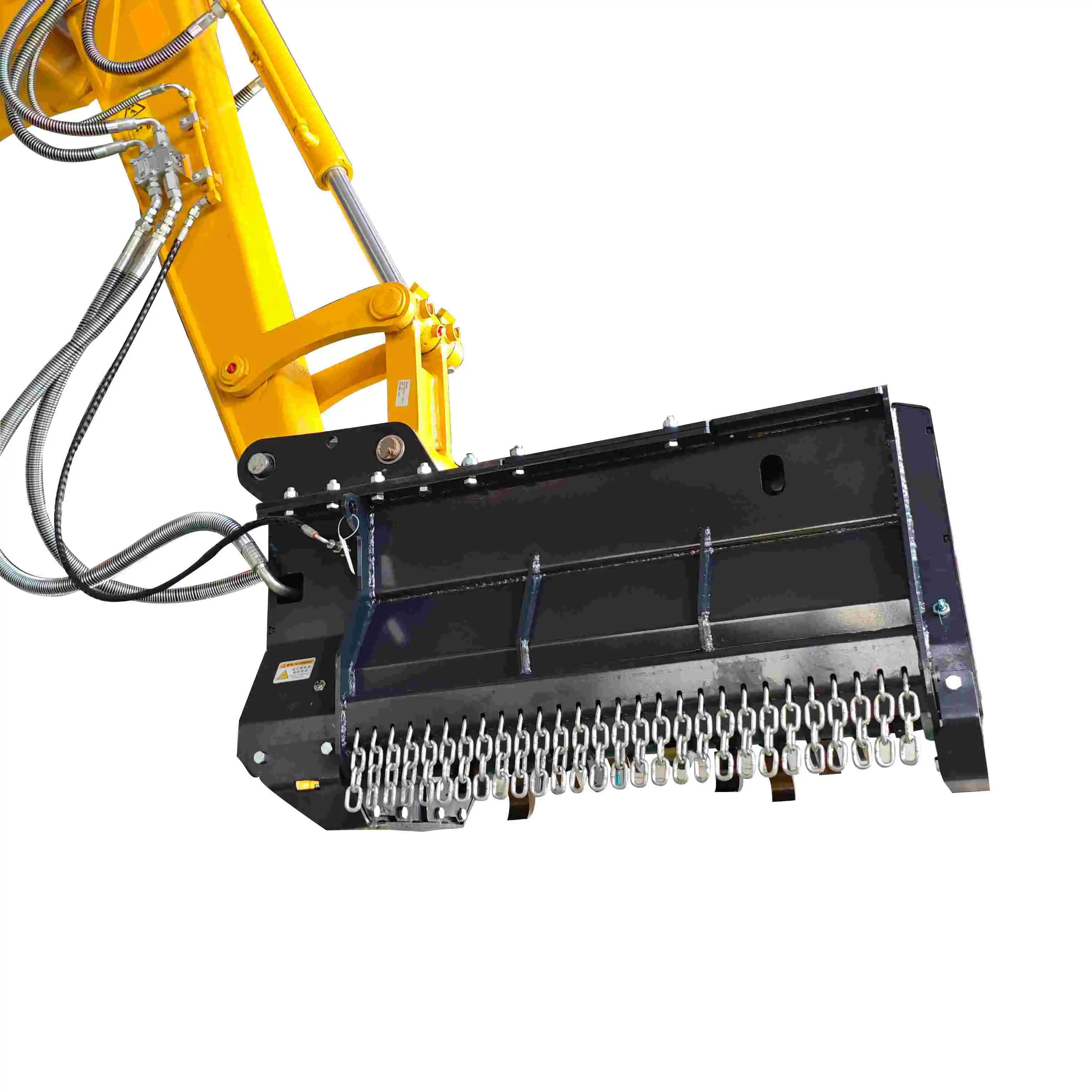What is an excavator cab?
Excavators are essential machines in the construction and mining industries, capable of performing a wide range of tasks with precision and power. At the heart of these versatile machines lies the excavator cab, a crucial component that plays a significant role in operator comfort, safety, and overall machine performance.
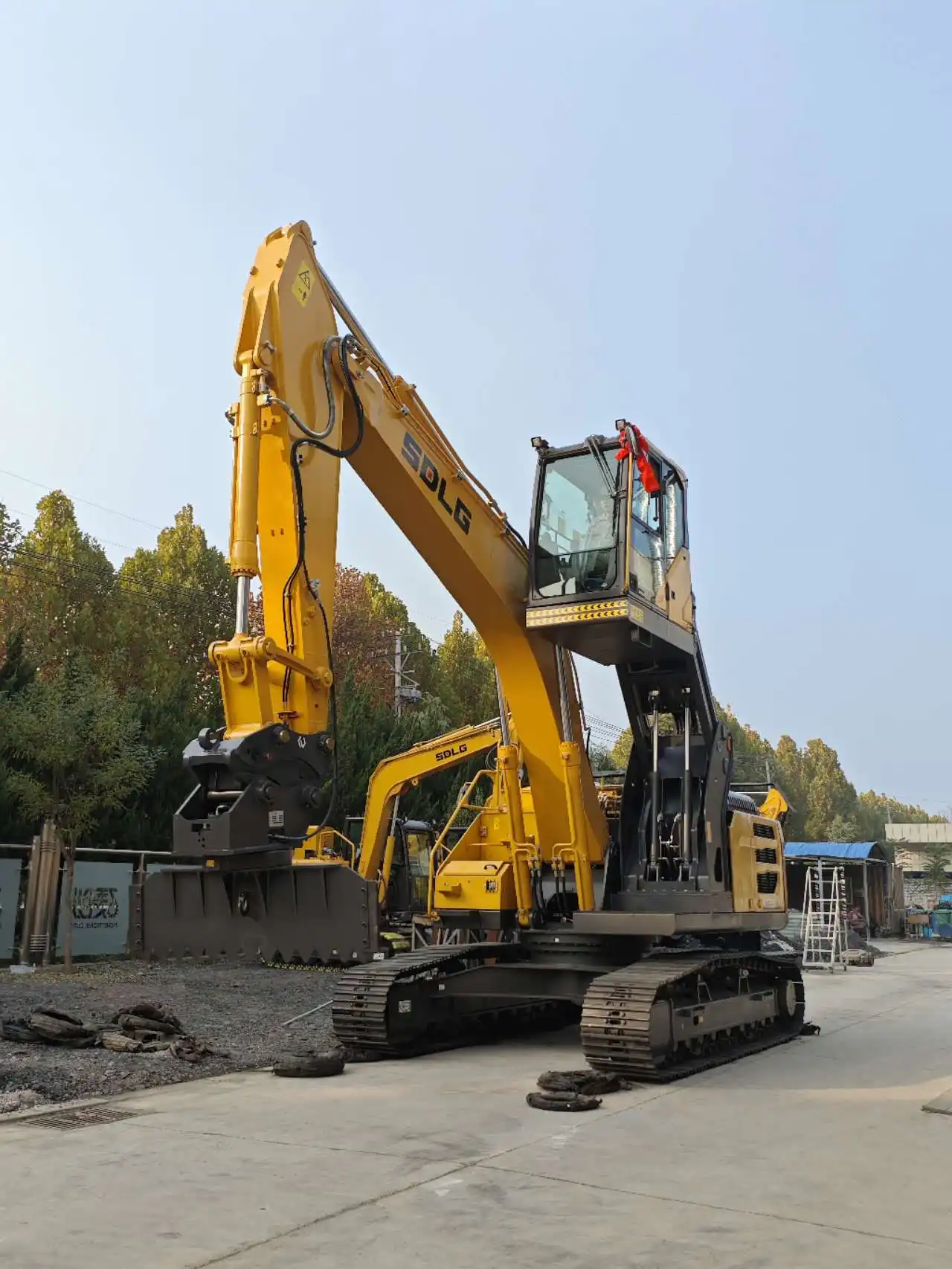
What is an Excavator Cab?
An excavator cab is the enclosed compartment where the operator sits and controls the machine. It serves as the command center for the excavator, housing all the necessary controls, displays, and systems that allow the operator to maneuver the machine and perform various tasks. The cab is designed to provide a safe, comfortable, and efficient working environment for the operator, protecting them from external elements and potential hazards while maximizing their ability to operate the machine effectively.
Modern cabs have come a long way from their early predecessors. Today's cabs are equipped with advanced features and technologies that not only enhance operator comfort but also contribute to improved productivity and safety on job sites. These ergonomically designed spaces are built to withstand harsh working conditions while providing operators with optimal visibility and control over their surroundings.
What are the Main Components of an Excavator Cab?
The excavator cab consists of several key components that work together to create a functional and efficient workspace for the operator. Let's explore these components in detail:
- Structural Frame: The cab's foundation is a robust structural frame, typically made of high-strength steel. This frame provides protection for the operator and houses all other components of the cab. It is designed to withstand potential impacts and meet safety standards, including ROPS (Roll-Over Protective Structure) and FOPS (Falling Object Protective Structure) certifications.
- Windows and Visibility Systems: Large, impact-resistant windows surround the cab, offering the operator a panoramic view of the work area. Many modern cabs feature floor-to-ceiling front windows and skylight panels for enhanced visibility. Some advanced models also incorporate camera systems and displays to provide additional views of blind spots and the surrounding environment.
- Operator Seat: A crucial element for operator comfort, the seat is typically adjustable and designed with ergonomics in mind. It often includes features such as lumbar support, suspension systems to absorb vibrations, and adjustable armrests that house various controls.
- Control Console: This is where the operator finds all the necessary controls to operate the excavator. It includes joysticks for boom, arm, and bucket control, foot pedals for travel functions, and various switches and buttons for auxiliary functions. The layout of these controls is carefully designed for intuitive operation and reduced operator fatigue.
- Instrument Panel: The instrument panel houses various gauges, warning lights, and digital displays that provide the operator with crucial information about the machine's status. This may include fuel levels, hydraulic oil temperature, engine RPM, and various diagnostic data.
- Climate Control System: To ensure operator comfort in various weather conditions, excavator cabs are equipped with heating, ventilation, and air conditioning (HVAC) systems. These systems help maintain a comfortable temperature inside the cab, regardless of external conditions.
- Lighting: Both interior and exterior lighting systems are essential components of the cab. Interior lighting allows for clear visibility of controls and instruments, while exterior work lights enable operation in low-light conditions.
- Communication Systems: Many modern excavator cabs are equipped with radio systems or other communication devices that allow operators to stay in contact with ground personnel or project managers.
- Storage Compartments: Practical storage solutions within the cab allow operators to keep necessary items, such as tools, documents, or personal belongings, organized and within reach.
- Safety Features: This includes emergency exit points, fire extinguishers, and first aid kits. Some advanced cabs also incorporate additional safety features like proximity warning systems or object detection technology.
These components work in harmony to create a functional, comfortable, and safe working environment for the excavator operator. The quality and design of these elements can significantly impact the operator's ability to work efficiently and safely.
How Does an Excavator Cab Enhance Operator Comfort and Efficiency?
The design and features of an excavator cab play a crucial role in enhancing operator comfort and efficiency. Here's how various aspects of the cab contribute to improved working conditions and productivity:
Ergonomic Design: Modern cabs are designed with ergonomics at the forefront. The layout of controls, the positioning of the seat, and the overall cabin space are optimized to reduce operator fatigue and increase comfort during long working hours. This ergonomic approach allows operators to maintain better posture, reducing the risk of strain or injury associated with repetitive movements.
Noise and Vibration Reduction: Advanced cab designs incorporate noise and vibration dampening technologies. This includes the use of sound-absorbing materials, improved sealing, and sophisticated suspension systems. By minimizing noise and vibration, operators can maintain focus and work for extended periods without experiencing excessive fatigue or stress.
Climate Control: The ability to regulate temperature and humidity within the cab is crucial for operator comfort. Modern HVAC systems in excavator cabs can maintain optimal working conditions regardless of external weather, be it extreme heat, cold, or humidity. This climate control contributes significantly to operator alertness and overall well-being during long shifts.
Enhanced Visibility: Clear, unobstructed views of the work area are essential for efficient and safe operation. Large windows, strategically placed mirrors, and camera systems provide operators with excellent visibility in all directions. This enhanced view not only improves work accuracy but also contributes to site safety by allowing operators to be more aware of their surroundings.
Intuitive Controls: The arrangement and design of controls within the cab are crucial for efficiency. Modern excavator cabs feature intuitive control layouts, often with customizable settings to suit individual operator preferences. This allows for smoother operation, reducing the mental load on the operator and enabling them to focus more on the task at hand.
Information Display and Management: Advanced instrument panels and digital displays provide operators with real-time information about the machine's performance and status. This immediate access to crucial data allows operators to make informed decisions quickly, optimizing machine performance and preventing potential issues before they escalate.
Reduced Physical Strain: Features like suspended seats with multiple adjustment options, ergonomic joysticks, and optimally positioned foot pedals all contribute to reducing physical strain on the operator. This not only enhances comfort but also helps prevent long-term health issues associated with prolonged machine operation.
Improved Air Quality: Many modern cabs are equipped with advanced air filtration systems. These systems help maintain clean air inside the cab, filtering out dust, allergens, and other particulates that are common in construction and mining environments. Better air quality contributes to operator health and comfort, especially during long work hours.
By focusing on these aspects of operator comfort and efficiency, excavator cab designs have significantly evolved. The result is a work environment that not only protects the operator but also enhances their ability to perform tasks effectively, leading to increased productivity and job satisfaction.
How Do Different Excavator Cab Designs Affect Machine Performance?
The design of an excavator cab goes beyond just operator comfort; it can have a significant impact on the overall performance of the machine. Here's how different cab designs can influence excavator performance:
Weight Distribution: The position and weight of the cab affect the machine's center of gravity. Different cab designs can alter the excavator's stability, which is crucial for safe operation, especially when working on uneven terrain or lifting heavy loads. A well-designed cab takes into account weight distribution to optimize machine balance and stability.
Visibility and Operator Awareness: Cab designs that prioritize visibility can significantly enhance the machine's performance. Better visibility allows operators to work more precisely and efficiently, reducing the likelihood of errors or accidents. For instance, cabs with larger windows or those equipped with camera systems can improve the operator's ability to perform delicate tasks or work in confined spaces.
Hydraulic System Integration: The layout of controls within the cab and their connection to the hydraulic system can affect the machine's responsiveness and precision. Advanced cab designs integrate controls seamlessly with the hydraulic system, allowing for smoother operation and finer control over the excavator's movements.
Technological Integration: Modern cab designs often incorporate advanced technologies such as GPS guidance systems, load weighing systems, and machine control systems. These technologies can significantly enhance the excavator's capabilities, improving accuracy, efficiency, and productivity on job sites.
Adaptability to Different Attachments: Some cab designs are more conducive to the use of various attachments. For example, cabs with better visibility or integrated attachment control systems make it easier for operators to switch between different tools, enhancing the machine's versatility and overall performance.
Operator Fatigue and Performance: Cab designs that prioritize operator comfort and reduce fatigue can indirectly improve machine performance. A less fatigued operator is more likely to maintain consistent performance throughout their shift, leading to higher overall productivity and potentially reducing errors or accidents.
Environmental Considerations: Cab designs that effectively insulate the operator from external conditions (noise, dust, temperature extremes) allow for more consistent performance across various working environments. This adaptability ensures that the excavator can maintain high performance levels regardless of external conditions.
Safety Features and Performance: Cabs designed with advanced safety features not only protect the operator but can also enhance performance. For instance, proximity warning systems or object detection technologies can allow operators to work more confidently and efficiently, especially in crowded or complex work environments.
Maintenance Accessibility: Some cab designs provide better access to key components for maintenance. This can indirectly affect machine performance by ensuring that regular maintenance is easier to carry out, potentially reducing downtime and maintaining optimal machine condition.
The evolution of excavator cab designs reflects a deep understanding of the symbiotic relationship between operator comfort, machine functionality, and overall performance. As technology continues to advance, we can expect further innovations in cab design that will push the boundaries of what excavators can achieve on job sites.
China Excavator Cab Manufacturers
The design and features of cabs have come a long way, significantly impacting both operator comfort and machine performance. As the construction and mining industries continue to evolve, the importance of well-designed, technologically advanced cabs cannot be overstated. These crucial components not only ensure the safety and comfort of operators but also play a vital role in enhancing productivity and efficiency on job sites.
At Shandong Tiannuo Engineering Machinery Co., Ltd., we understand the critical role that cab excavators play in the overall performance of the machine. Our range of excavator cabs is designed to meet the highest standards of quality, comfort, and efficiency. We offer:
- Excavator cabs applicable for 13-40 ton models
- Above train assignment style
- Effective pass height of 4300 mm (customizable)
- Effective passing width of 4200 mm (customizable)
- 4-unit leg configuration
If you're in the market for a high-quality cab manufacturer, we invite you to explore our offerings. For more information or to discuss your specific needs, please don't hesitate to reach out to our team:
- Manager: arm@stnd-machinery.com
- Sales Team: rich@stnd-machinery.com and tn@stnd-machinery.com
Let us help you enhance your excavator's performance with our state-of-the-art cab solutions.
References
1.Karam, M. A., & Noyes, J. M. (Year). "Ergonomic design of heavy machinery cabs: A review of the literature." International Journal of Industrial Ergonomics
2. Smith, J. D., & Johnson, R. K. (Year). "The impact of visibility systems on excavator operator performance and safety." Journal of Construction Engineering and Management
3. Association of Equipment Manufacturers. (Year). Excavator Technology Trends Report.

_1733877348138.jpg)
